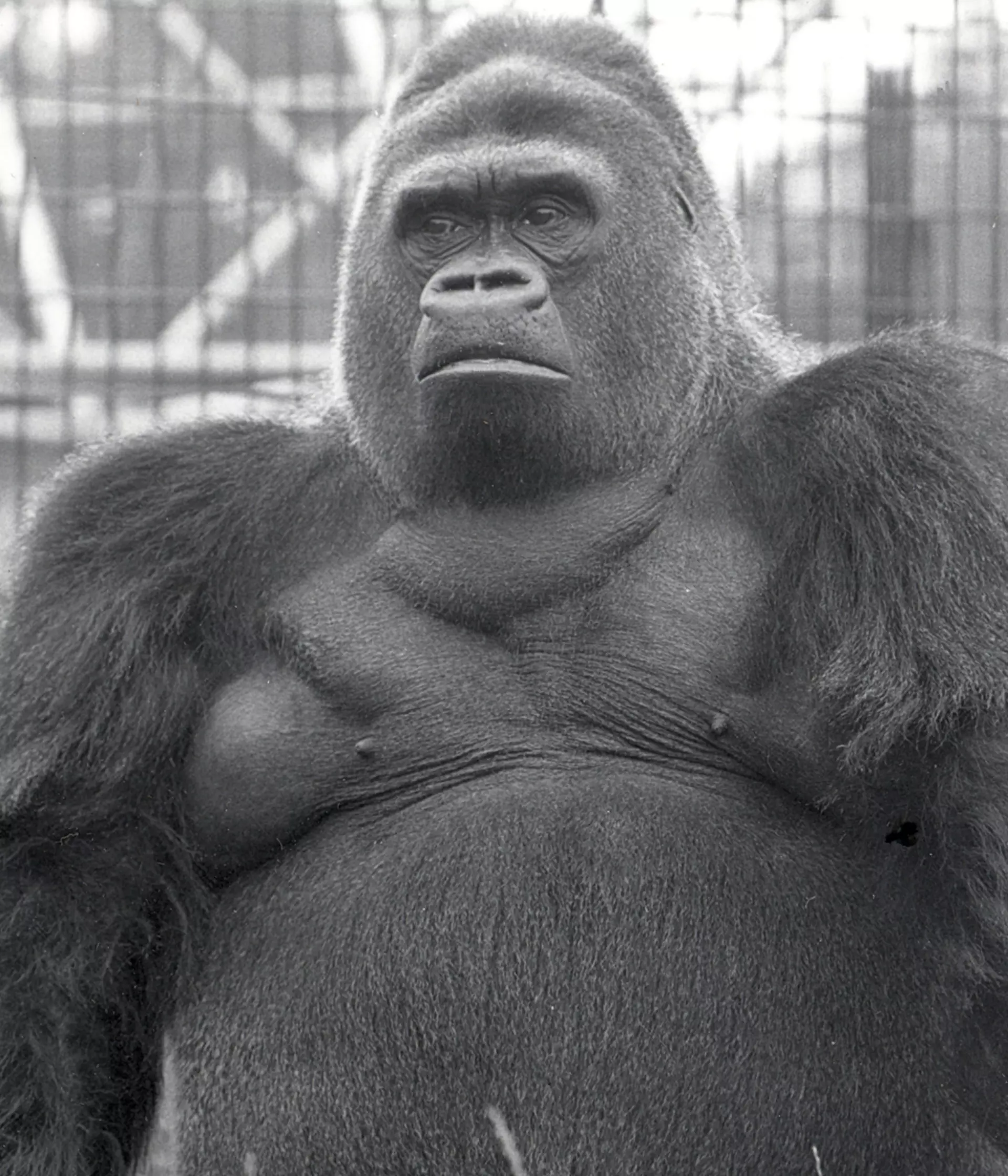Iconic Zoo animals
Our animals have been inspiring a lifelong love of animals for two-hundred years, influencing art, culture and science along the way. Whether through advancing understanding of animal behaviour, contributing to crucial scientific work or galvanising change to protect their species, our animals have helped shape the global movement to protect the natural world today. Get to know some of the biggest characters in our history, which inspired children's books, popularised new words and changed attitudes.
Guy the gorilla
On Guy Fawkes day 1947, a small gorilla arrived at the Zoo clutching a tin hot-water bottle. At first he would only respond to French as he had spent the previous 6 months in the Zoo in Paris. Guy became one of the Zoo's best loved characters. When sparrows entered his enclosure, he would scoop them up gently and peer at them before letting them go. He died of a heart attack after having a tooth extracted in 1978. His statue is much loved by London Zoo's visitors.
Obaysch the hippo
Such was the excitement when Obaysch arrived in 1850, that the number of visitors doubled that year – not surprising, since he was the first hippopotamus to be seen in Europe since Roman times.
Goldie the eagle
When Goldie the golden eagle escaped in 1965, Britain became obsessed; for almost a fortnight he appeared on television and in the press and was cheered wildly when mentioned in the House of Commons. Five thousand people caused traffic jams around Regent's Park as he flew from tree to tree. After 11 days and 19 and a half hours, he was finally recaptured and brought back to the Zoo.
Quagga
The only quagga to have ever been photographed alive was at London Zoo. Our five photos of a quagga, provide the only insight into what a living quagga looked like, after the species became extinct in 1883. Thousands of quagga once grazed on the plains of southern Africa, and today they provide a reminder of the importance of wildlife conservation.
Winnie was an American black bear who was deposited at the Zoo in 1914 by a Canadian lieutenant at the start of the First World War. She was visited by A.A. Milne and his son Christopher and lives on in the stories of Winnie the Pooh and Christopher Robin.
Eros the snowy owl
In 1950 Eros, a wild snowy owl, became lost in a storm and fell exhausted on the deck of HMS Eros off the Azores. During his life at the Zoo he had three mates and fathered 57 chicks. He died in 1993.
Pipaluk the Polar Bear
Pipaluk, a male polar bear, was born at London Zoo on the 1st December 1967. (The only polar bear cub previously reared successfully at the Zoo had been Brumas – a female.)
The name ‘Pipaluk’, the ending of which rhymes with book, was chosen from a list of Inuit names – meaning ‘the little one’. Pipaluk’s parents, who had arrived as young cubs from Moscow Zoo in 1960, were called Sam and Sally. They were named after the Zoo’s bear keeper Sam Morton and his fiancée.
Pipaluk left London Zoo in 1985 when the Mappin Terraces (which housed all the bears) were closed, and died at the age of 22 years in a Zoo in Poland.
Jumbo the elephant
Jumbo is believed to have been born in about 1861. When still very small he arrived at the zoo in the Jardin des Plantes, Paris. In 1865 he was sent to London Zoo. On arrival he was in poor condition but placed in the care of Matthew Scott, a former antelope keeper, he flourished. Jumbo was so famous he's had a lasting impact on the English language, and helped make the word 'Jumbo' a synonyms for big!
A female African elephant, Alice, arrived a few months later and the two elephants became associated in the public mind. Jumbo was soon trained to give rides and became a great favourite, largely because he had a very good nature. By the early 1880s Jumbo was nearly 11 feet tall.
Sadly, Jumbo was killed in a railway accident in Canada in 1885.
Belinda the spider
This famous Mexican red-kneed bird-eating spider is sadly missed following her death in 1993 aged 22 years. Belinda made many television appearances, including an advert for the Zoo, and helped people overcome their fear of spiders as part of several hypnotherapy programmes.
Josephine the hornbill
Josephine was a great Indian hornbill who, for many years, was the oldest animal in the Zoo. She lived in the Bird House until her death in 1998 aged 53.
